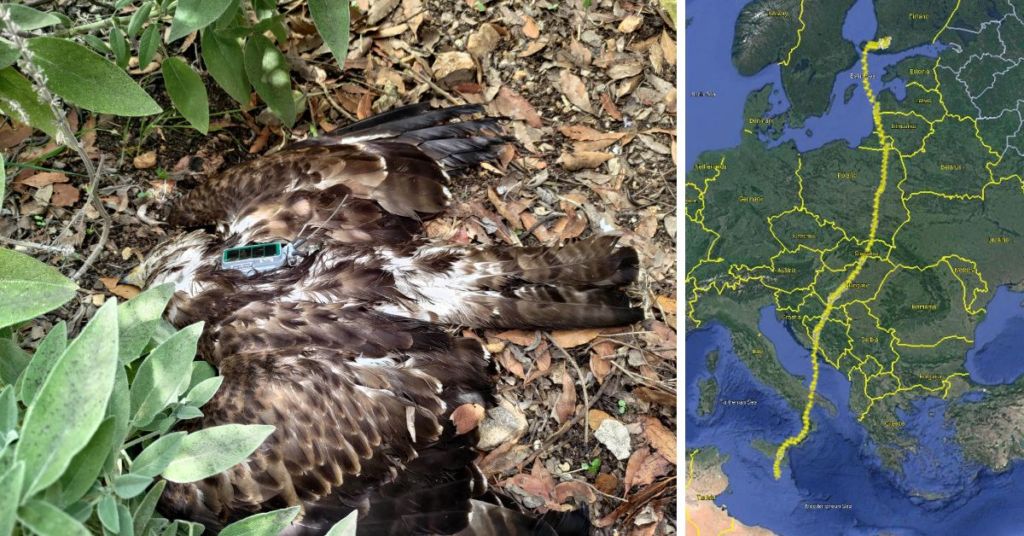GPS-Tracked Honey Buzzard Shot Down In Malta After Three-Week Journey Through 10 Countries

A Finnish Honey Buzzard which was being tracked by GPS made it through a three-week journey through 10 countries – but was killed as soon as it came to Malta.
An investigation by the police’s Environmental Protection Unit (EPU), assisted by officials from BirdLife Malta in collaboration with scientific researchers based in Germany and Finland, managed to track the exact location of the dead bird, retrieving the carcass of this migrant.
Commenting on the events uncovering the death of one of her subjects, project leader Dr Elham Nourani said, “I didn’t really know much about Malta until now. It’s remarkable how a protected species such as the Honey Buzzard is still hunted illegally in a European State.”
“All the birds we have tracked have had no issues reaching the African continent except this one in Malta, and another bird which stopped transmitting over Cyprus.”
The Finnish bird owes its origin to the outskirts of the city of Turku in southwest Finland where it was ringed and GPS-tagged in its nest in typical forest habitat.
Towards mid-September, the bird of prey started its journey south, first crossing the Baltic Sea to Latvia and further migrating through Lithuania, Kaliningrad, Poland, Slovakia, Hungary, Croatia and Bosnia and Herzegovina.
It then crossed the Adriatic Sea reaching the Italian peninsula and continued towards the southern part of Sicily where it stopped for a few days’ rest at the forest reserve of Santo Pietro.
On 8th October it left Sicily at around 11.30am crossing the Central Mediterranean and reaching Gozo around 3.30pm, following which it headed south towards Buskett.
Birdwatchers based at Buskett sighted the bird at around 5pm.
Information from its GPS tracker which was shared with BirdLife Malta after contact was made with the researchers soon led to doubts about the bird’s welfare after it stopped moving over the area of Ġnien il-Kbir outside Rabat, a few hundred metres from the Buskett Bird Sanctuary.
Further information about the bird’s location was then shared with EPU officers, which led to its finding in a private garden where the bird landed after it was shot down.
A post-mortem examination by veterinarians confirmed the presence of large lead pellets in the bird’s body as the cause of death.
The juvenile Honey Buzzard, a protected species, was part of a project led by researcher Elham Nourani from the Max Planck Institute of Animal Behavior and the Centre for the Advanced Study of Collective Behaviour in Germany.
Entitled “Ontogeny of soaring flight”, the study is looking into the migratory behaviour of juvenile birds leaving Finland and Switzerland and whether birds follow adults, each other or are simply guided by their own instinct and experiences.
A total of 25 birds from Finland were fitted with GPS trackers by researchers Patrik Byholm and Wolfgang Fiedler, with help from Teemu Honkanen and other local bird ringers, with another six birds tagged by the Swiss Ornithological Institute in Switzerland.
The study mirrors other similar initiatives led by Byholm over the years which are uncovering the spectacular journeys these birds undertake.
Honey Buzzards appear in good numbers over Malta during September and October, with most birds being juveniles on their first migration south to the African content.
Photos by Nicholas Barbara
Do you think Maltese authorities need to clamp down on hunters?
